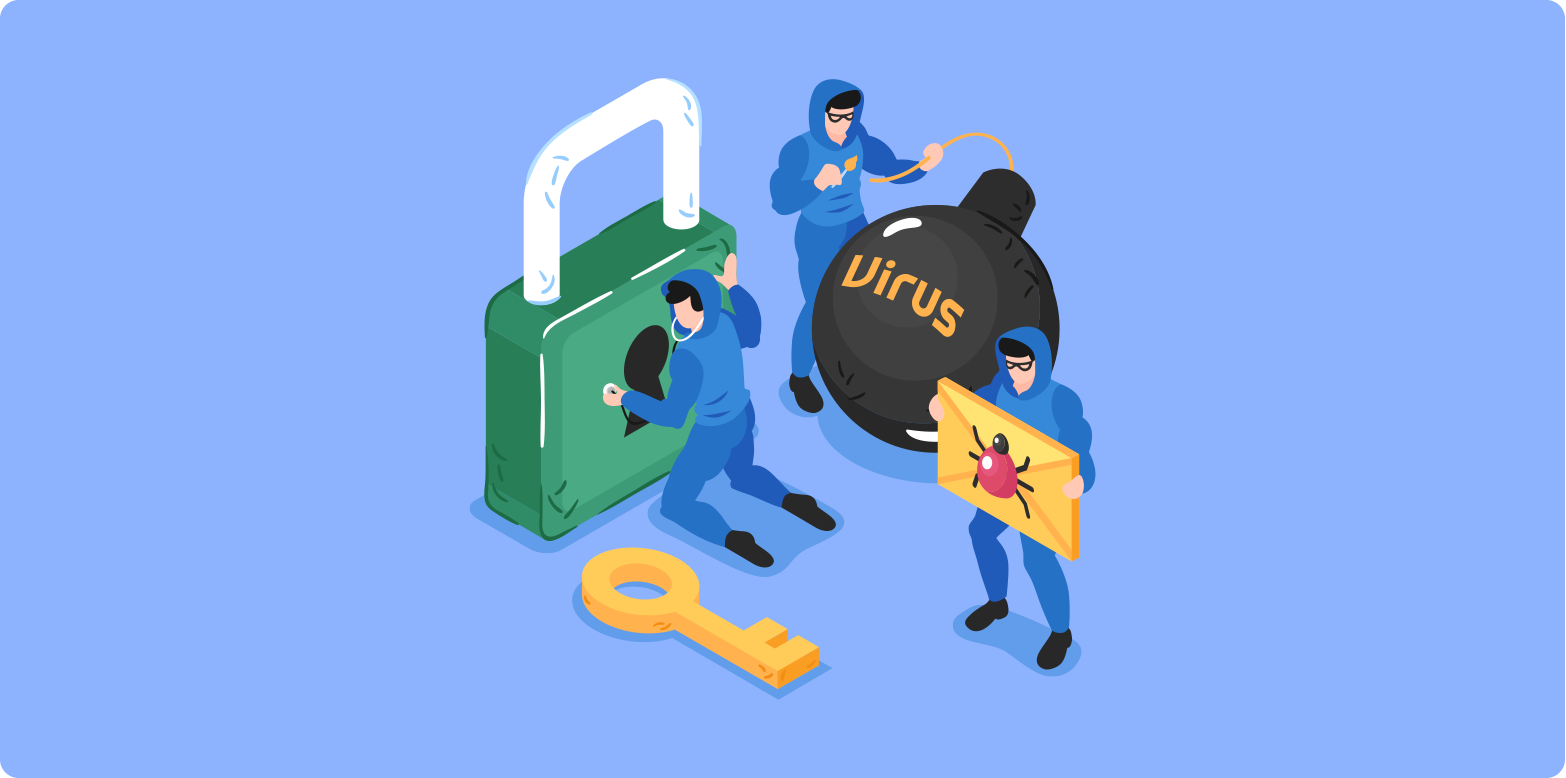The Complete Guide to Liveness Detection Technique: The Best Solution for Detecting and Preventing Fraudsters
Biometric authentication is popular for its convenience and efficacy. It is widely used by phone manufacturers, banks, and eGovernment websites. But like any other technology that gives access to important information, it is often an object of hackers' and fraudsters' attacks. That is why every biometrics authentication needs liveness detection. Let’s see why it is dangerous to overestimate the security of biometrics authentication techniques without anti-spoofing technology.

Definition and Classification of Liveness Detection Techniques
What is liveness detection?
An AI-based liveness detection is an algorithm that securely detects live human beings’ approaches from fake biometric sample representation, such as silicon masks, photos, or videos. The technique is usually associated with facial recognition; however, the biometrics sample can also be a fingerprint, palm biometrics, a real iris, or even voice. The liveness detection algorithm is able to recognize and differentiate a live person from spoof and presentation attacks like masks, photos, videos, and audio recordings.
In 1950, Alan Turing, a British scientist, was the first to use the term “liveness detection” in his experiments. However, the meaning of the term then was a little different from its meaning now. Back then, it was used to test whether a machine was able to generate text responses similar to a human. If the person communicating through text messages with the machine could not tell whether it was a machine or a real person, the machine passed the test.
Today, face liveness detection technology is essential for our security, considering how many photos and videos of ourselves we publish and store online.
Liveness detection is used mostly in banks and eGovernments for identity verification.
2 Types of liveness detection
Typically, liveness detection techniques are divided into two groups - passive and active liveness detection. The key difference between the groups is user interaction.
● Active liveness detection
Active liveness detection is the originator of liveness detection. Here a person is asked to perform a simple task to prove their realness. The task can be something like performing simple movements with one’s head, blinking, or watching a moving object on a screen.
Some believe that an active check is less accurate than a passive check because it could be giving clues for defeating the liveness check by providing exact instructions to users. On the other hand, some professionals say that the active liveness detection technique is trustworthy, but that it possibly can have a negative effect on customer experience, which is why companies prefer passive liveness detection over active.
● Passive liveness detection.
Passive liveness detection, as can be seen in its name, does not require any actions from the user. It is run in the background, and users don’t even know that they are being tested. Therefore, passive liveness detection is a more seamless way to detect an attack.
The passive liveness detection algorithm analyzes the content of the biometric sample: lighting of the photo that was taken by the user, shadows, texture of the skin, and the like. If the user does not pass the liveness check, the alert about the problematic part of the process is not present. Therefore, potential hackers aren’t given clues about how the system can be fooled. This is why passive liveness detection is believed to be more resistant to spoofing attacks than active liveness detection.
Recently,a hybrid form has appeared: semi-passive liveness detection. The aim of this method is to combine the best of both types of liveness detection to provide high security without impacting user experience. During semi-passive liveness detection, the user is still asked to perform some activities, but they are extremely simple. The most common one is smiling.
Active vs. Passive vs. Semi-passive liveness detection
● Active face liveness detection
1. Requires user’s involvement (performance of some particular action, like turning a head)
2. Takes some time to perform
3. May be inconvenient for users to use in particular situations, for example, in public
4. Necessary user involvement can lead to higher abandonment rates
● Passive face liveness detection
1. No user interaction required
2. Almost immediate since the liveness check is run in the background
3. The absence of user involvement leads to higher completion rates
● Semi-passive face liveness detection
1. Combination of the best features of passive and active liveness detection techniques
2. Users may perceive a higher security level when asked for simple interactive checks
Why Face Liveness Detection Is the Ideal Method of Fraud Protection

Facial recognition is an ideal method of biometric authentication. It is intuitive and adaptable to most devices with widespread camera integration. It is an important feature, given the fact that mobile phones have become almost an extension of the human body these days. The working principle is extremely familiar: it’s almost the same as taking a selfie. However, as we said earlier, the abundance of personal images and videos on social media and the Internet makes facial recognition authentication vulnerable.
That is why facial liveness recognition is crucial for the security and accuracy of biometric authentication.
There are various techniques that make face liveness detection so resistant to identity fraud. Let’s have a look at the main ones.
● Challenge and response
Challenge and response is an example of an active face liveness check. The user is asked to proceed with simple tasks such as moving their head, smiling, and so on. The purpose of the challenge and response check is to recognize and defeat 2D photographs or video replays.
● Depth and motion perception
Another method to beat 2D spoofing attempts. Here the 3D facial recognition maps a user’s face and defines the depth of the received image.
The role of AI is essential here because face liveness detection techniques rely heavily on facial detection algorithms to spot alterations in poses and expressions and remove noise from the image (brightness and background).
● Algorithms and AI
AI algorithms are used to match input biometric samples with preregistered samples. AI automatically recognizes changes to a user’s face, such as glasses or facial hair.
● Multi-modality
This is a method combining two or more biometric authentication techniques: facial, vocal, retinal, and thumbprint. An attacker may be able to fool one biometric authenticator, but it will be almost impossible to fool two or more within one attack.
However, this method is not universally applicable to all businesses, and the integration method is more complicated than the aforementioned ones.
Types of Presentation Attacks Prevented by Liveness Detection

Attempts to fool the system and fake an identity are called “presentation attacks.” These attacks can be divided into two groups:
● when users try to steal another person’s identity
● when users try to create an additional identity to use.
For the former type of attack, attackers use non-live images (video or photograph), silicon masks, or “gummy fingers” created by casting fingerprints in clay. For the latter, attackers may grow facial hair, wear makeup, or use prosthetics to alter their appearance. They might even alter their fingertips to fake more than one identity.
One more type of spoofing attack is deepfakes. These are videos wherein the real subject is digitally replaced with someone else’s likeness. Deepfakes are usually used for entertainment purposes, but they can also be used to commit fraud. Because it utilizes depth perception, AI-based face liveness detection cannot be fooled even by deepfakes.
The Main Ways to Use ALCHERA ’s AIIR SDK for Face Liveness Detection
ALCHERA provides the most up-to-date face detection, face matching, and face liveness detection technologies. We can guarantee the highest possible security and accuracy levels because our AI network is constantly learning and developing. Our researchers monitor the latest spoofing techniques to keep up to date and reflect new demands for solutions to new spoofing methods. Let’s see where our AIIR SDK can serve you.
● KYC (Know Your Customer) checks
Biometric recognition, especially facial recognition, is a more accurate and secure alternative to regular selfie or ID verifications, and AIIR SDK is a great solution for face liveness detection.
● Payment fraud prevention
Face authentication prevents financial crimes by ensuring that the true user performs each transaction, and AIIR SDK prevents face spoofing. Therefore, your customers can be sure that their identities and finances are protected.
● User action confirmation
With ALCHERA ’s solution, your customers are protected from identity theft with a simple and fast biometric check that ensures that the true user initiates every action.
● Biometric verification
Time is money, and our AIIR SDK solution eliminates the need for physical presence during the identity verification process.
● Physical entrance secure
Biometric technology can also be used for door access control. It’s easy for employees to forget a password or leave a key/ID card at home. But the face is a part of the body, so no one has to worry about forgetting an item and being locked out of a facility.
Why Should You Use AIIR SDK?

At ALCHERA we always keep the end user of our product in mind. That is why our solutions are always easy to implement while being extremely secure and accurate.
● Accuracy: AIIR SDK is the top ranker in the NIST Face Recognition Vendor Test, so we can guarantee you 99,99% accuracy even when people wear masks.
● Speed: AIIR SDK is able to proceed with 1:1 matching in under 1/500,000 seconds &1:N matching in under 1 second, so your customers’ journey stays pleasant and flawless.
● Easy implementation: Flexibility and Scalability are other strengths of our solution. AIIR SDK is a multi-platform development kit that can maintain high performance even on devices with low proceeding power.
The world is constantly developing, and biometrics is a technology that is here to stay. Unfortunately, new fraud methods emerge along with every new technology. That is why it is crucial for businesses to implement face liveness detection SDK on any web or mobile app using biometric authentication. The experts at Alchera are here to help.
Contact us to get the most accurate and secure face authentication and face liveness detection technology for your business.





